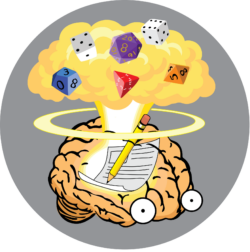This is how we plan out what skills we are going to have by looking at our daily, weekly, and monthly routines. We take a systematic approach and begin by how we spend our time, and if this creates skills, endurance, and conditioning ideal for our purposes.
Daily Routine
The daily routine creates the ideal operating condition for the learner.
- 6 most productive hours.
- Of the 6 productive hours, 2 hours are spent doing the most important job and training of the day.
- An example in knowledge work is documentation of activities for reports for a dashboard and updating project documentation. In the absence of needed information, we keep note of the missing information, and work with place-holding information.
- An example in archaic soldiering this is marching and the logistics of marching.
- The remaining 4 of the 6 most productive hours are spent in supporting activities that complement and enhance.
- An example is knowledge work is the collection of Information through observation and analysis, research, sorting old reports and documentation, transcription of verbal or handwritten reports, and Inquiries.
- An example of archaic soldiering this is engaging the enemy and gathering information,
- 4 less productive hours are for consolidation. Consolidate using the 5S methodology. The 5S method is done in 15-45 minutes, it’s not meant to take up all 4 hours. It can be done many times throughout the 4 hours. The key goal is to have the procedural habit of going through the 5 steps.
- Sort. We sort our things, experiences, and information we have into their categories and places.
- Set in order/Schedule. We then arrange these things by their priority, spending
- Shine. We take notes on how to improve it or make the improvements or corrections if time permits. We fix or we plan when to fix what is broken or needs fixing.
- Standardize. We become aware and take note our methods. We measure the attributes of our activities and knowledge, and use these attributes to better prioritize and plan their use.
- Sustain. We make the routines habit-forming. We set reminders, personal goals, and ideals for the reinforcement of the organization.
Weekly Routine
Weekly routine is to factor alternation of activities that do not fit the daily routine, for other competing priorities, and for times of best performance and recovering performance, as well as consolidation of gains for the week.
- Alternating goals to factor in recovery period. That in days of recovery goals are 20-50% that of the best days. Recovery days can be 2 for every 1 best day while young. Recovery days can be 2.5 or more days depending on condition.
- Some key Activities requires many hours and compete to be the most important task, and will require the trainee’s schedule to alternate.
- Consolidation of daily performance for considering if there is need to adapt to changing conditions.
Monthly Routine
Monthly routine is about consolidating goals and adapting to changing conditions.
Weekly goals are consolidated and reviewed for the consideration of changing conditions and adapting goals to better suit them.


Leave a Reply
You must be logged in to post a comment.